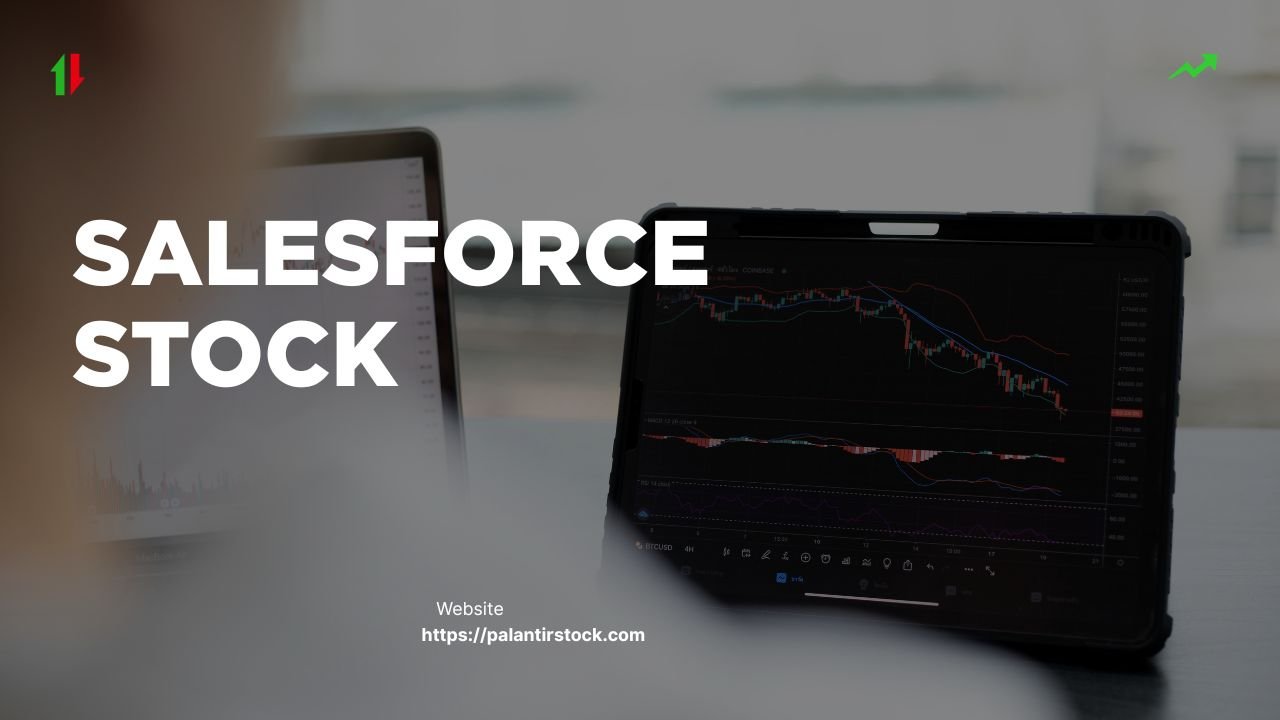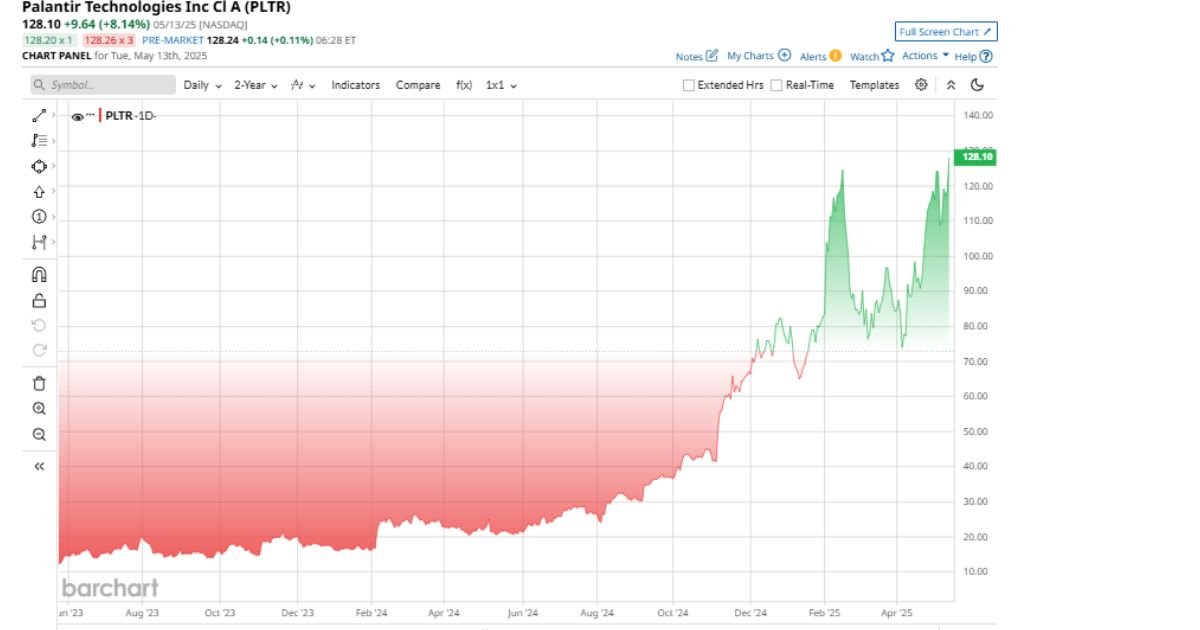
Salesforce Stock vs Palantir Stock: AI Growth, Market Trends, and Investor Insights
Salesforce stock and Palantir stock have become two of the most discussed names in the technology sector. Both companies are shaping the future of software and artificial intelligence in different ways. Salesforce, also known by its ticker CRM, is widely recognized as a leader in cloud-based customer relationship management software, while Palantir, listed as PLTR, has built its reputation in data analytics and government contracts. Investors and analysts are closely watching these two companies because their strategies and results often reflect broader trends in technology adoption and AI growth.
Salesforce has been in the news a lot recently. The company’s CEO, Marc Benioff, spoke at the Goldman Sachs Communacopia conference about the rapid growth of its new AI platform called AgentForce. He shared that more than 12,000 customers are already using AgentForce, which is a huge achievement considering the product launched only nine months ago.
Salesforce data cloud, coupled with its AI agents, has already brought a revenue of approximately 1.2 billion, which demonstrates that AI has become a substantial portion of the enterprise growth. This development underscores the fact that Salesforce is turning from a simple CRM software vendor to an AI-based software powerhouse.
Despite those achievements, Salesforce stock has had a few setbacks in the market. Recently, the company published its earnings report, and the price of the stock declined, as the investors were anticipating better performance. The company announced that its year two quarter revenue is increasing at a rate of 10% and it anticipates the third quarter will increase at a rate of 8 to 9 percent.
Such slowness brought investors into doubt on whether the demand for AI tools and cloud software is keeping pace with expectations, particularly as the US economy starts to demonstrate signs of deceleration.
Meanwhile, Salesforce increased its full-year operating margin target slightly to 34 percent as opposed to 34.1 percent, which demonstrates that the company remains profit-oriented. The other notable point was that its current remaining performance obligations, one of the crucial indicators of future revenues, rose by 11 percent to 29.4 billion. This figure was higher than analysts predicted and indicated that the customers remain loyal to using Salesforce services in the long term.
Another issue discussed by Marc Benioff was competition in the government. He said that Salesforce has begun to secure contracts that once belonged to Palantir. He complimented Palantir because it is an inspiring company, and also added that Palantir is very expensive compared to Salesforce.
This shows how Salesforce is positioning itself as a more affordable yet powerful option, even in areas like government business where Palantir has traditionally been strong. It also highlights the growing overlap between the two companies, as both are focusing heavily on artificial intelligence and large-scale data solutions.
Palantir stock, on the other hand, continues to attract attention for different reasons. The company has become a favorite among retail investors and is often seen as part of the “meme stock” movement. Palantir’s main strength lies in its ability to provide advanced data analytics to government agencies and private companies. 
Its software can assist organizations in analyzing large volumes of information and making crucial decisions. Those people supporting Palantir think that with the growth of demand in AI and data solutions, the company will become stable. Nevertheless, critics say that the high prices and the reliance on government contracts by Palantir may turn into an issue eventually.
Their interdependence between Salesforce and Palantir is getting more interesting as they do not work in entirely different spheres anymore. Salesforce is launching additional AI-based products into new markets, and Palantir is also attempting to attract additional commercial clients beyond its typical government customer base.
This increased competition can be positive since customers have increased options now, though it can also put a strain on the two companies to demonstrate the value of their products. To investors, it translates to them having to look closely and compare the performance of each company and whether their strategies are long-term sustainable.
Wall Street is still optimistically cautious looking at Salesforce stock today. Over 60 percent of the analysts who follow the company are rating it as a Buy. They perceive Salesforce to be underestimated relative to some of its rivals. To illustrate, Salesforce is valued at approximately 15 times its projected 2026 enterprise value to free cash flow (compared with peers, which are valued at 28 times).
This shows that Salesforce stock is currently available at a discount. Some analysts believe the market is underestimating Salesforce’s ability to fully monetize its AI services. Until the company proves how much revenue AI can consistently generate, its valuation may remain lower than competitors.
Meanwhile, Palantir stock continues to be driven by both financial results and investor sentiment. It has the image of being a bold, futuristic company, which makes it attractive to a certain type of investor. However, its long-term success will depend on whether it can balance high pricing with broader adoption and whether it can compete effectively in the private sector.
To give a quick comparison, here is a table that shows some of the latest available details about Salesforce stock and Palantir stock:
| Company | Ticker | Recent Price (approx.) | Growth Focus | Key Highlight |
| Salesforce | CRM | $246 | AI agents, cloud, CRM | AgentForce gained 12,000 customers in 9 months |
| Palantir | PLTR | $17–$18 | AI-driven data analytics | Strong government contracts, expanding commercial |
In simple terms, Salesforce stock reflects a large company in transition, using AI to power its next phase of growth, while Palantir stock reflects a younger, bold company still proving itself outside of government contracts. Both are worth watching because they represent different sides of the AI revolution in technology.
To investors, Salesforce shares can appear appealing due to their cheaper valuation than other companies and their intensive use of AI. Palantir shares, on their part, are more risky but there is also a chance of high returns given that the company can grow well. According to Salesforce news today, it is evident that the company has long-term growth in mind and is working towards eliminating the fear that AI will annihilate the conventional software industry.
Marc Benioff has clarified that AI will not substitute a program but make it more powerful. This quote makes one believe that Salesforce is not wary of the changes in technology but it is prepared to spearhead them.
To sum up, both Salesforce stock and Palantir stock share an interesting narrative of how technology companies are changing to adapt to artificial intelligence and compete in the emerging opportunities.
Salesforce is working to return to double-digit growth and win in areas like government contracts, while Palantir is maintaining its position as a bold innovator in data analytics. For investors who follow Salesforce news today, the key takeaway is that AI is not just a trend but a real growth engine, and both Salesforce and Palantir are deeply invested in shaping its future.
Also Read About: Palantir Stock Price Today: AI Growth, Returns, and Market Risks


